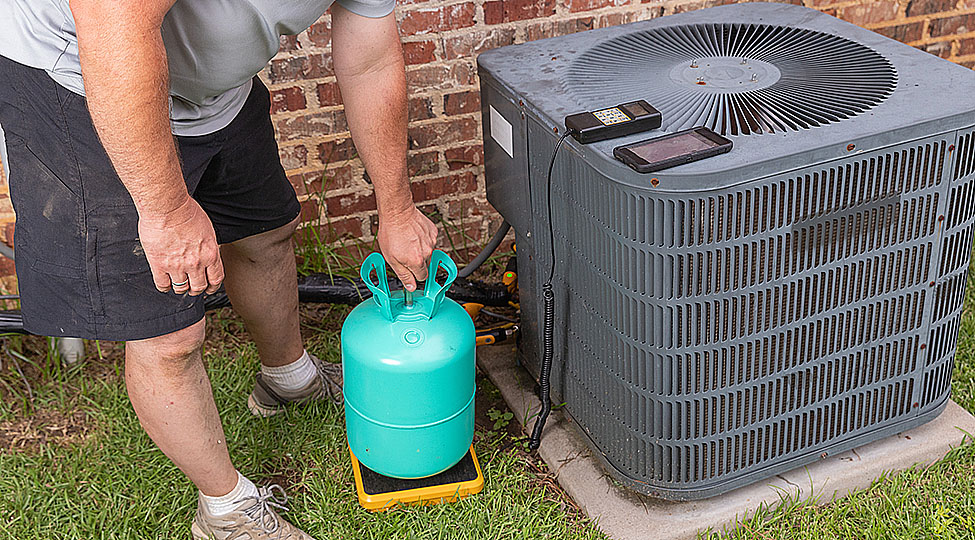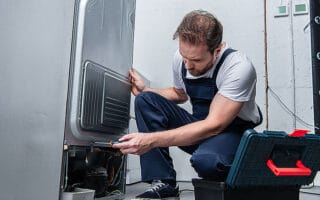Having a heat pump in your house is a blessing, especially during the winter season. These home appliances comprise several different parts that come with a limited lifespan. So, sooner or later, the components will start showing problems such as a bad reversing valve. Let’s take a look into the signs that indicate your reversing valve has gone bad and you need to perform heat pump repair for troubleshooting the issue.
Signs Of A Defective Heat Pump Reversing Valve
Stuck Reversing Valve
Stuck reversing valves are among the most common heat pump problems. A heat pump with a stuck reversing valve will not allow the unit to switch between cooling and heating modes.
There could be several reasons behind a stuck reversing valve such as dirt accumulation. If the heat pump has not been cleaned in a while, there is a chance that dust and dirt accumulation on the reversing valve is causing it not to work properly. You can try cleaning it or giving it some taps to see if that works.
Plus, you should also consider cleaning the capillary tubes. Signs of physical damage such as oxidation, burnt points, holes, etc. indicate that a replacement is needed. It should be replaced by an experienced heat pump technician.
Defective Coil
A defective coil means that the reversing valve will not properly energize. If you notice that the solenoid voltage is lowered than required, it most probably means the coil is faulty and requires a replacement. Even if there is sufficient voltage, you will need to be sure a magnetic field exists, energizing the valve.
If the valve is not magnetically energized, it means there is a loose connection that is not linking the electric part of the valve with the solenoid. And if the problem continues to exist, it means the valve simply needs to be replaced.
Leaking Valve
Another reason behind a bad reversing valve could be that the refrigerant level in the heat pump is not right. It could be that there is a leakage. If the refrigerant level is not up to the mark, it could cause the reversing valve to go bad.
However, if there are no signs of leakage, it means there is a problem with the reversing valve or the compressor. If there is a problem such as a leakage within the compressor, you will observe unusual sounds. If that isn’t the case, it means the reversing valve is the issue.
How Can I Prevent Heat Pump Issues?
As mentioned earlier, heat pumps and their components come with a limited lifespan. This means that they will either need repairs or replacement down the road. While some problems, as a result, can be avoided, others cannot.
Heat pumps like other home appliances require regular maintenance. This means they need regular cleaning and annual expert maintenance as well. If ignored, the grease and oil accumulation can stress the components and make them give up.
Furthermore, there is also a chance that your energy bills keep going up. And this is one of the most popular signs when your heat pump is not working normally. When a heat pump is about to go bad or has gone bad, it will consume relatively more electricity.
That said, offering professional maintenance at least once a year will save you from most of the troubles. Instead of saving some money, think of it as an investment.
Where Is The Reversing Valve Located?
The reversing valve is usually located near the compressor. However, the location may slightly vary depending on the model and variant of the heat pump. Moreover, you may also need to remove some covers to access the valve, which could be slightly difficult.
The best way to do that is to consult the user’s manual. Make sure the heat pump is turned off from the main power source and wear safety equipment to prevent injuries.
Conclusion
In the end, a malfunctioning reverse valve is neither hard to identify nor difficult to replace. However, it is important that you look after the heat pump to avoid expensive repairs and replacements and get in touch with heat pump repair services Tyson’s Corner for the proper replacement heat pump components.



